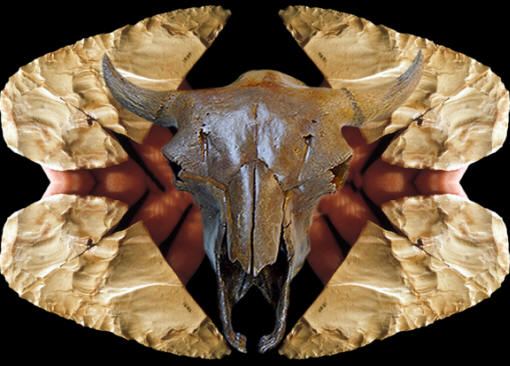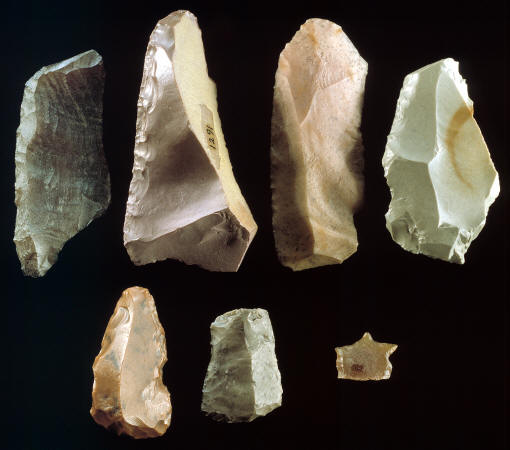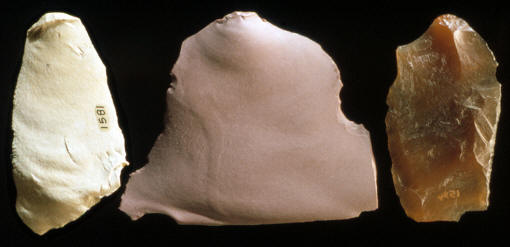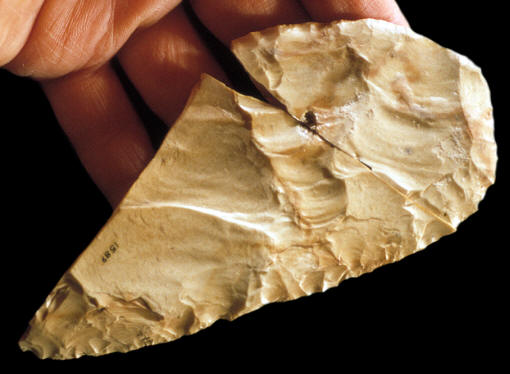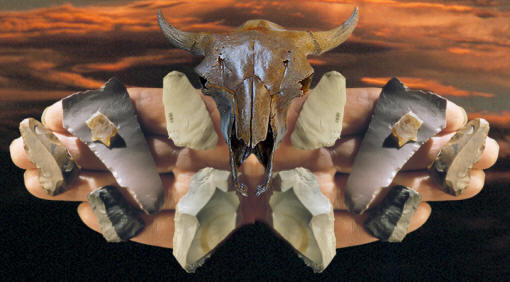|
|
|
The Goshen complex gained a considerable amount of support by the discovery of the Mill iron site. However there still remains a controversy about the comparison of Goshen points to Plainview points. The issue surrounds the fact that both point types are very similar in style and they may one day prove to be the same point type. Frison suggests that they should be called Goshen/Plainview points until they are better understood. The Plainview site was discovered in northern Texas in 1944. Later radio carbon dates from bone and snail shell produced much more recent dates than Mill Iron at 7,100 + 160 years and 9,170 + 500 years. |
|
|
Thirty-one projectile points were found on the Mill Iron site. Eleven were found in the camp area, twelve in the bone bed meat processing area and seven points were found on the surface. These points exhibit a fairly wide range of style and flaking technique. Some of the bases are almost straight while others vary from slightly to fairly deeply concave. Also, some of the basal edges are concave but they are straight at the base of the concavity, similar to some Folsom points. The sides are straight to slightly convex and one example appears to be slightly fish-tailed. |
|
|
|
|
Flaking patterns of Goshen points range from random to parallel transverse. One example found in the bone bed exhibits the highest knapping skill that Paleo-Indians ever produced. This point is also interesting for its rounded point. Unlike most Goshen points that have sharp points, the tip of this one was deliberately shaped with micro flaking into a rounded point. It's been suggested that it may have been an offering that was ceremonially placed with the bones, rather than a spear to hunt with. |
|
|
|
|
Two broken fragments of bone artifacts were found on the Mill Iron site. The most interesting object is made of mammoth rib bone measuring 4 3/4 inches (12 cm) long. Both of the ends are broken away but one end is drilled with a conical hole. It's believed that this artifact may have been used as a socket to hold a foreshaft on the end of a spear. The other bone artifact is made of bison bone and measures 1 3/8 inches (35 mm) wide. This broken fragment was probably egg shaped and it's been suggested that it may have been a pendant. |
|
|
|
|
Paleo-Indian bone-bed sites are impressive for their dramatic feature of extinct animal bones. These sites have provided archaeologists with a wealth of information. They show how people were hunting and what types of animals were being hunted. They also produce diagnostic artifacts that connect these early people together on sites that are often widely separated. The Mill Iron site was an extraordinary discovery. One wonders how many more similar sites are waiting to be discovered. |
|
|
"REFERENCES"
1991,
Frison, George C., "The Goshen Paleoindian Complex: New Data For
Paleoindian Research," Clovis Origins And Adaptations, p.
133. |
|
